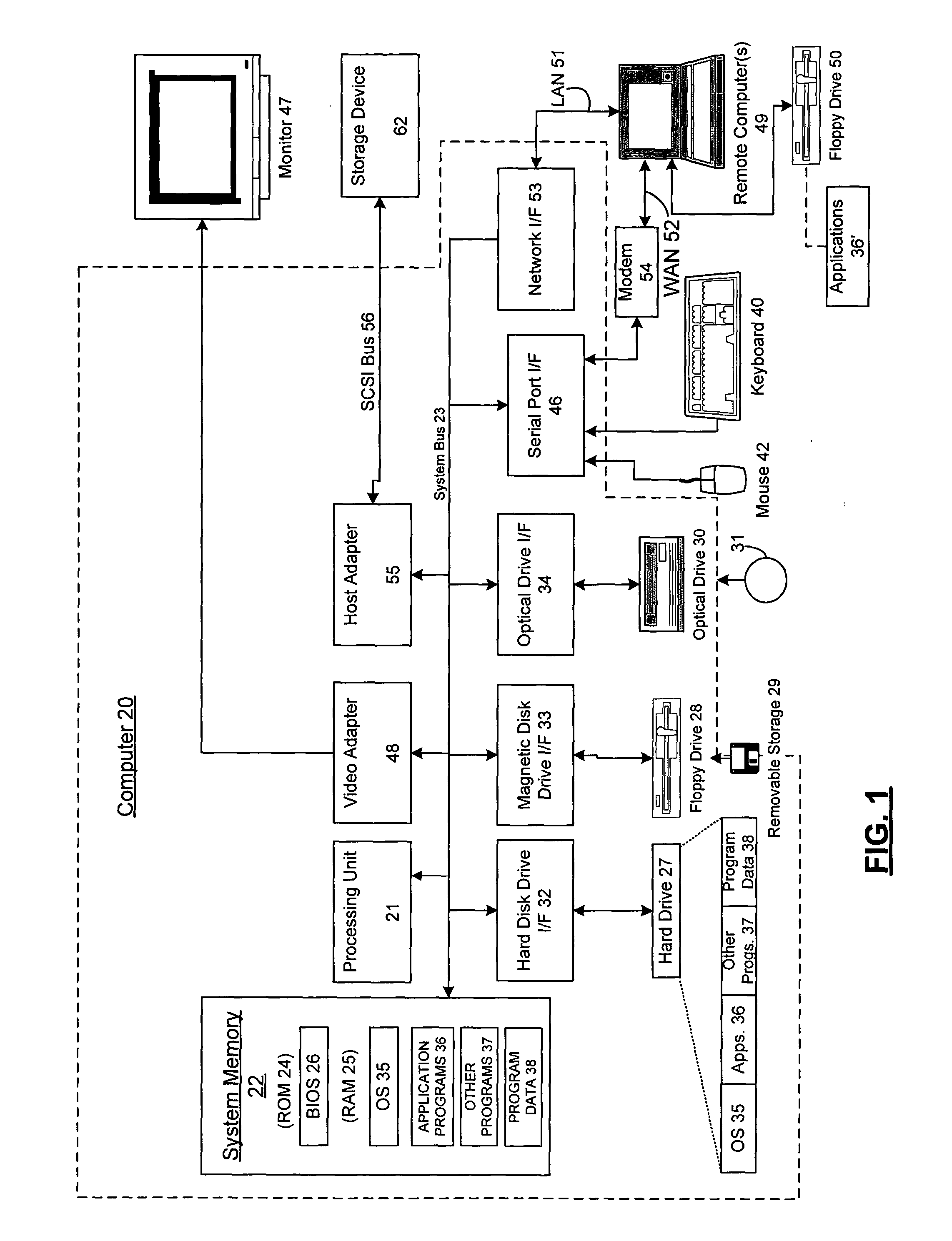Systems and method for representing relationships between units of information manageable by a hardware/software interface system
a hardware/software interface and relationship technology, applied in the field of information storage and retrieval, can solve the problems of not controlling the operational unable to control the operation consistency of the target endpoint item, etc., and achieve the effect of more efficient application developmen
- Summary
- Abstract
- Description
- Claims
- Application Information
AI Technical Summary
Benefits of technology
Problems solved by technology
Method used
Image
Examples
Embodiment Construction
TABLE OF CONTENTSI.INTRODUCTION22A.EXEMPLARY COMPUTING ENVIRONMENT22B.TRADITIONAL FILE-BASED STORAGE26II.A NEW STORAGE PLATFORM FOR ORGANIZING, SEARCHING, AND28SHARING DATAA.GLOSSARY28B.STORAGE PLATFORM OVERVIEW29C.THE DATA MODEL301.Items322.Item Identification36a)Item References36(1)ItemIDReference36(2)ItemPathReference36b)Reference type hierarchy363.Item Folders and Categories374.Schemas39a)Base Schema39b)Core Schema395.Relationships41a)Relationship Declaration42b)Holding Relationship43c)Embedding Relationships45d)Reference Relationships45e)Rules and constraints46f)Ordering of Relationships476.Extensibility52a)Item extensions53b)Extending NestedElement types57D.DATABASE ENGINE591.Data Store Implementation Using UDTs602.Item Mapping623.Extension Mapping644.Nested Element Mapping655.Object Identity656.SQL Object Naming667.Column Naming678.Search Views67a)Item68(1)Master Item Search View68(2)Typed Item Search Views69b)Item Extensions69(1)Master Extension69Search View(2)Typed Extensio...
PUM
 Login to View More
Login to View More Abstract
Description
Claims
Application Information
 Login to View More
Login to View More - R&D
- Intellectual Property
- Life Sciences
- Materials
- Tech Scout
- Unparalleled Data Quality
- Higher Quality Content
- 60% Fewer Hallucinations
Browse by: Latest US Patents, China's latest patents, Technical Efficacy Thesaurus, Application Domain, Technology Topic, Popular Technical Reports.
© 2025 PatSnap. All rights reserved.Legal|Privacy policy|Modern Slavery Act Transparency Statement|Sitemap|About US| Contact US: help@patsnap.com



